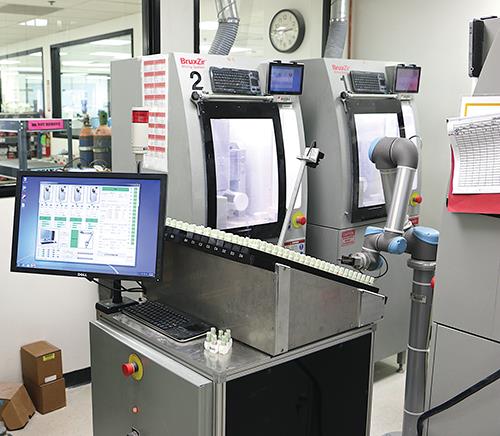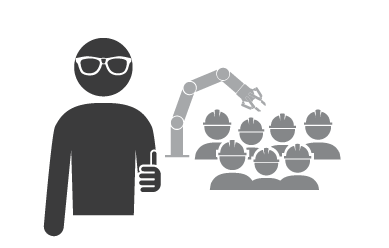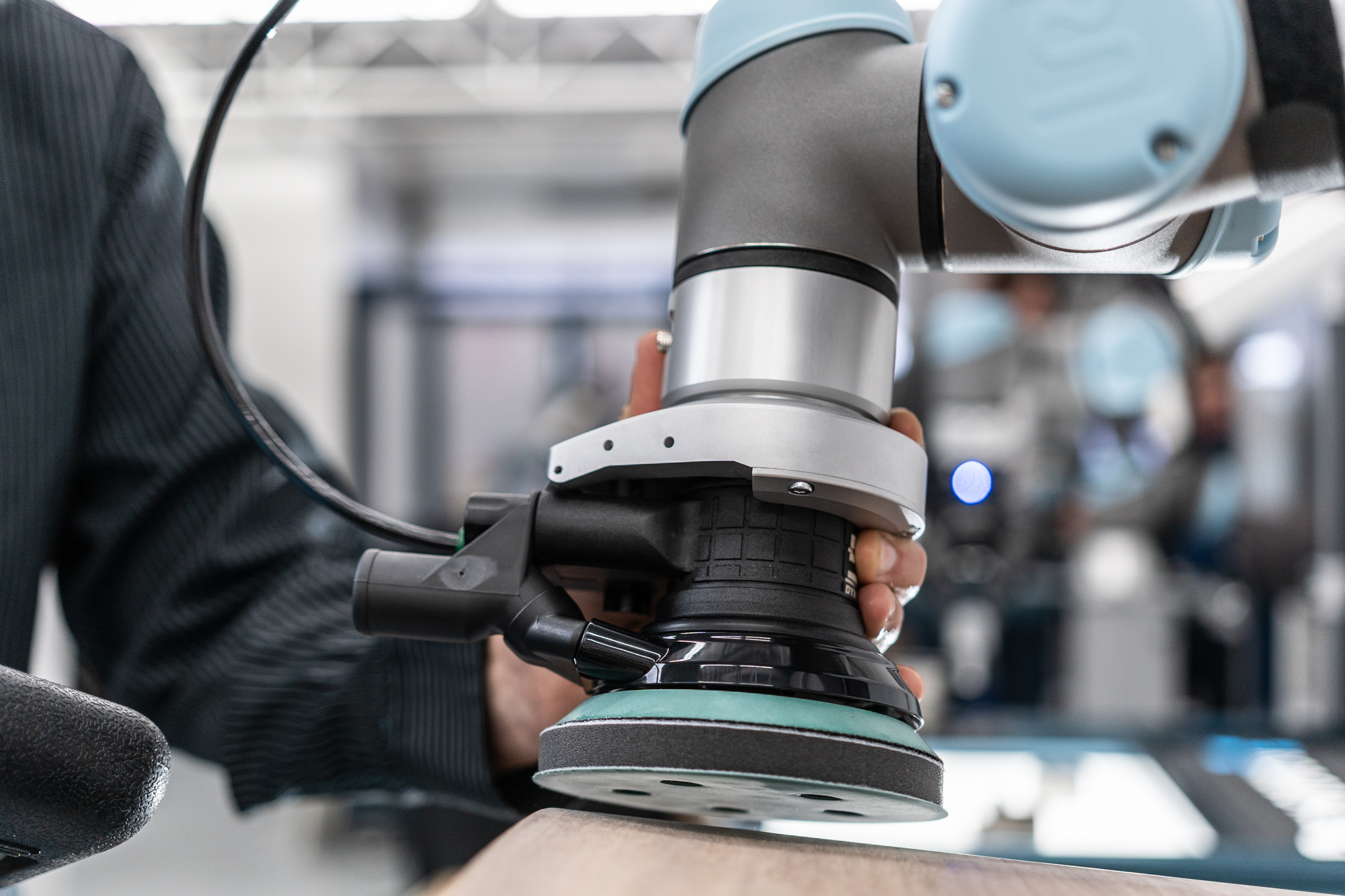Collaborative Robots Used in the Machine Tending of Teeth??

Posted on Jan 11, 2016 7:00 AM. 5 min read time
We are used to seeing Universal Robots doing machine tending for CNC machines. Often this is for metal parts, though sometimes tending is for plastic injection machines, but this time, it is for the manufacture of teeth!!! As you probably understand, we are not talking about real human teeth, but dental crowns. These crowns are manufactured by Glidewell Laboratories in California and are produced at a high rate. The only way to keep up the production pace was to introduce a robot into their shop. Here's how they did it.
Their business model is based on the ''mass customization'' principle. Actually most of the crown will start from the same base, but they still need to machine it to customize it for each individual human so that it fits exactly. Since every mouth is different, the crown is shaped according to the 3D scan / CAD that the dentist has sent to Glidewell. From there they can manufacture the crown, fit them together if needed and send the final product to the dentist, where he or she just needs to install it once it is received.
This must be a very fast process, because customers do not want to wait too long before having a great smile again. The faster the production, the happier the customer.
Production Rate

With demand increasing, Glidewell had to load and unload their CNC machine at an outrageous rate. Instead of trying to push their human employees beyond feasible limits, they decided to load 15 raw crowns at a time in the machine and start the machine once it was loaded. However, this means that you need to wait to have 15 orders to start the machine.
With the introduction of Universal Robots, they could machine the order ''on the spot'' as soon as it arrived. Since they have implemented a highly performant ERP (Enterprise Resource Planning) software they can send specific orders to the robotic cell and it can produce a crown faithful to the customer 3D scan.
On the top of this, they can monitor their feeding station (no pun intended) with a vision system to ensure that they will always have raw crowns ready to machine. They can also see if the feeding system is stuck, jammed or if it simply empty.
Employees
Employees are always concerned about the introduction of robots into a manufacturing process... and I totally understand them. It is kind of scary to think that you might lose your job to a robot. But the reality is that robot will always need humans, for maintenance and when problems arise, also robots cannot do everything. At the moment they are best at simply doing repetitive tasks. This means that workers can spend more time doing setups, maintenance, quality checks and other task that require dexterity and thinking, instead of the tasks that are likely to lead to worker’s compensation claims for repetitive stress injury.
What is also great about the UR robot is that it is easy to use for everyone. Even if you don't have any robotic knowledge you can learn how to use it within a couple of hours. The teach pendant and the programming by demonstration make the job easier at all levels of the company.
Integration

As explained in the video, integration is easy! It does not require a large cage or enclosure and installation can be done by internal technicians. In the Glidewell case, they have simplified the process by introducing an ordering device that will allow the robot to pick up the crown at the very same spot each and every time. The only thing that the employee needs to do is make sure the feeder is full.
The gripper used in this situation is a simple small-opening pneumatic gripper. In fact, since all the crown bases have the same geometry, a simple gripper can be used. But having the flexibility of an electric gripper, without the pneumatic extras, could also simplify this application.
The gripper used in this situation is a simple small-opening pneumatic gripper. In fact, since all the crown bases have the same geometry, a simple gripper can be used. But having the flexibility of an electric gripper, without the pneumatic extras, could also simplify this application.
Once the robot has picked the raw crown, the CNC machine knows exactly what to do with it.
At the end of the process, the robot takes the machined dental crown and places it on a conveyor where it will be treated or finished by a human operator (with more dexterity). This allows the robot to do what it is good at, repetitive tasks and the human to do the dexterous tasks.
Finally, you should notice that the greatest issue or problematic in this particular case is to get all the machines communicating and synchronized together. This is where the ERP system is important, as it communicates with the CNC machine, the CNC with the robot, the robot with the conveyor and the vision system with the ERP system... This is the biggest challenge for the robotic cell, but as you can see, it can be done and it is definitely worth it.
To get another example of machine tending, watch the following video.
If you are interested in the collaborative robot concept, take a look at the document at the bottom of this page to see a comparative chart of robots. You might find one that will fit your application more closely than another.










Leave a comment